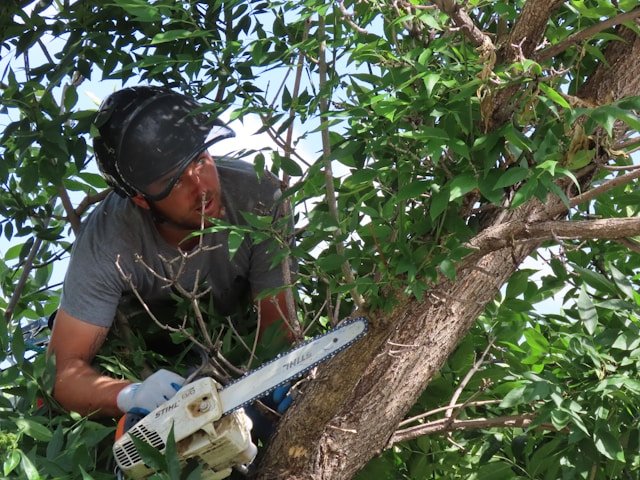
Rocker switches may appear basic, but there’s much more to them than meets the eye. This small but mighty component is used everywhere, from cars and boats to home appliances and DIY electronics.
So, whether you are installing LED lights in your truck or switching fans in your workshop, wiring a rocker switch is something you must get right to keep everything safe and running properly.
The catch here, though, is one mistake, and you could be facing annoying glitches to blown fuses or an electrical fire.
The good news?
Almost every one of these problems can be avoided with just a little know-how.
Curious to learn more about those mistakes and the correct approach to wiring?
In this article, we’ll walk you through six of the most common rocker switch-wiring mistakes and how to avoid them.
1. Not Understanding the Switch Type
Rocker switches are a very versatile device and come in a variety of types, all intended for different uses. However, people often assume that all rocker switches are wired the same.
That is not true. You will see variations such as single pole single throw (SPST), single pole double throw (SPDT), double pole single throw (DPST), and double pole double throw (DPDT) with different wiring layouts and number of terminals.
So, don’t rely on the external look of the switch, as two rocker switches might look identical but work completely differently. For this reason, pick the rocker switches that are adapted to your setup.
That said, to choose the right switch model, always consult its datasheet or diagram. At the same time, check the label of the wires clearly and identify key terminals such as power input, load output, and ground.
Thus, with the right knowledge or information, rocker switch wiring is simple and highly effective for custom power control.
2. Mixing Up the Terminals
When it comes to a rocker switch, misidentification of the connected terminals may cause reverse polarity, an incomplete circuit, or even damage to your connected components. So, you should check these terminals carefully.
For example, an SPST switch usually has two terminals: one for power in and one for power out. While you might not necessarily damage anything by mixing these up, in more complex switches, such as illuminated or DPDT types, this can cause the lights not to function or even cause short circuits.
Therefore, don’t connect wires by guessing or with trial and error. Rather, if you are unsure, use a multimeter to check continuity or voltage. Also, before wiring, become familiar with the “NO” (normal open), “NC” (normal closed), and “COM” (common) terminals.
3. Overloading the Switch
Each rocker switch is designed to handle a certain amount of electrical current and voltage (usually labeled in amps (A) and volts (V)). Ignoring these ratings is one of the most dangerous mistakes you can make because overloading a switch can lead to excessive heat, melting, and even electrical fire.
For instance, imagine using a 6A switch to operate a 10A device. It’ll work at first, but after a while, the internal components will be pushed beyond their limits. As a result, this strain can cause a burned wire or insulation failure.
So, to prevent this from happening, don’t assume that the switch will handle any load. That means never guess the capacity—always check.
You can calculate the total current load of the devices you want to power through the switch. If the total exceeds the switch’s rating, the heavy lifting should be handled by a relay or circuit breaker to protect the switch.
4. Poor Grounding in Illuminated Switches
Most illuminated rocker switches need an extra dedicated ground connection to power their internal light. However, people either forget to connect the ground or do not connect it correctly, so the switch does not light up, or even when turned off, it remains lit.
To prevent this, you should not believe that the light will work just because the switch is on. Instead, identify the dedicated ground terminal (marked or color-coded) and connect it properly to a clean ground source.
For example, grounding should go to the chassis or designated ground bus for automotive or marine setups.
5. Skipping Fuses or Circuit Protection
It’s not wise to install a rocker switch without a fuse or circuit breaker because the switch, by itself, won’t protect the wiring or connected components from damage if a short circuit or overload occurs.
Hence, don’t connect your rocker switch directly from the power source to the device without protection. Always install an in-line fuse or circuit breaker between the power source and the switch.
You should pick a fuse slightly above your normal operational current but less than the switch’s maximum rating. Further, clearly label your fuse size and location for easy future switch maintenance.
6. Messy or Loose Wiring

The most common and dangerous mistake is using loose terminals, poorly crimped connectors, or exposed wires. It can result in intermittent power, arcing, and electrical failure.
To avoid this mishap, don’t just twist wires together or leave uninsulated terminals, exposing copper or metal connectors that can touch other components. Rather, you should use proper terminals or connectors (soldered joints or spade connectors) and insulate them with heat shrink tubing or electrical tape.
Lastly, before plugging in, check to ensure all connections are tight and secure.
Conclusion
Rocker switches can be used as a compact tool for controlling power, but if not handled carefully, they can lead to electrical hazards.
Therefore, you should be mindful and avoid the mistakes mentioned, like misunderstanding the switch type, mixing up terminals, overloading, poor grounding in illuminated switches, leaving loose wiring, and skipping the circuit protection.
As a result, you can have a clean, functional, safe rocker switch wiring that will stay optimal.


